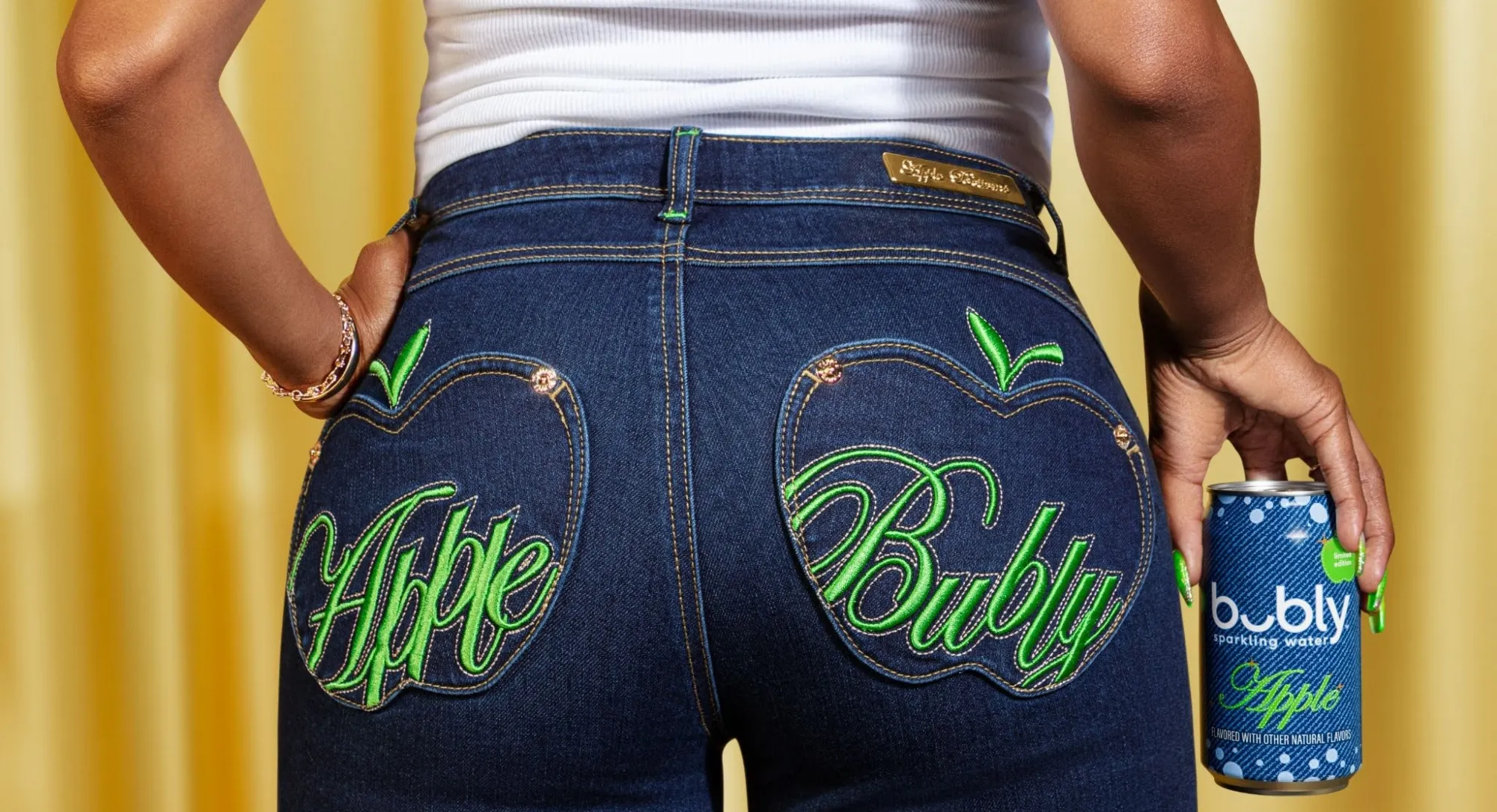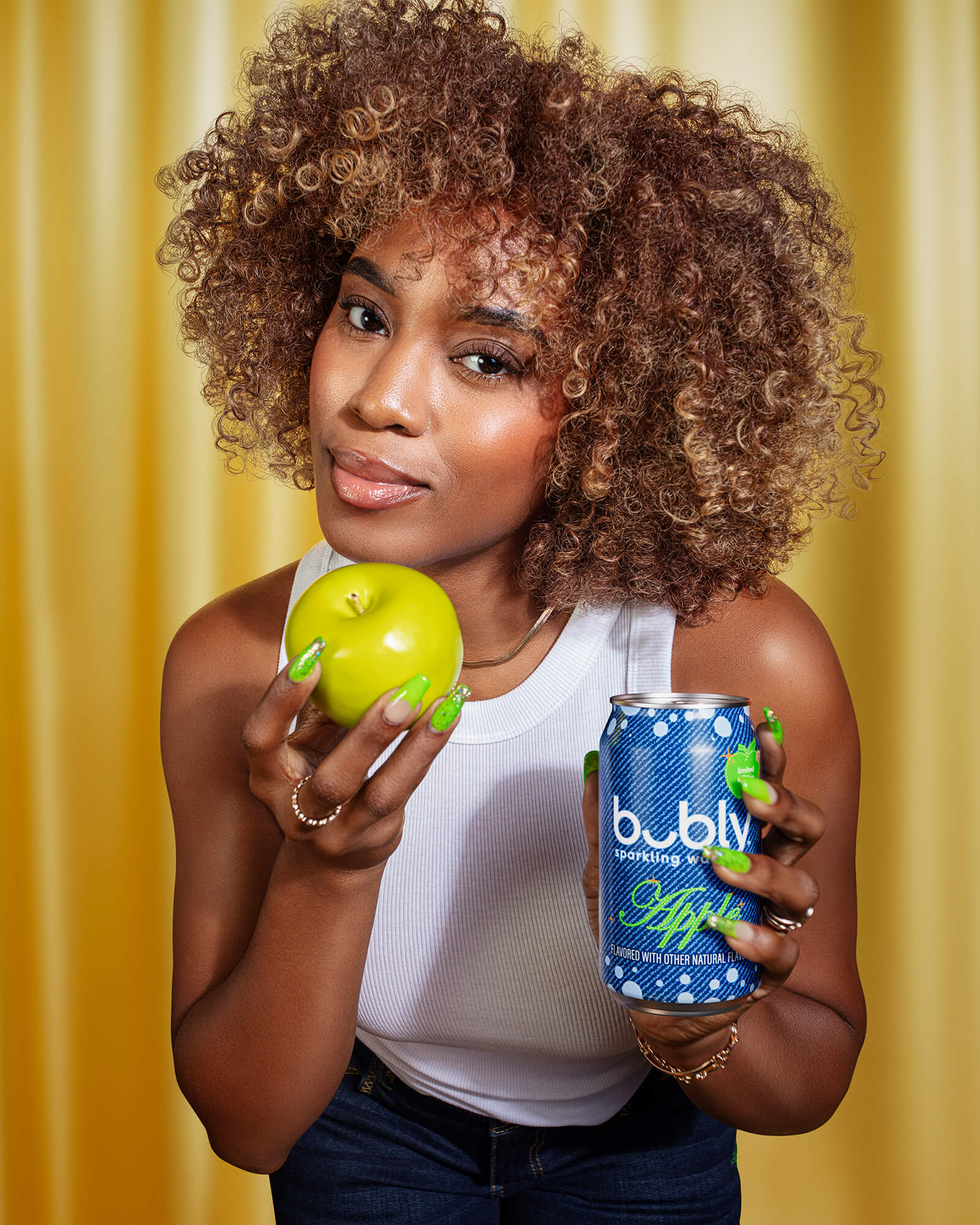
So did anyone else see the new Bubly collab? Because we had to do a double take.
If you haven’t seen it, Bubly (a sparkling water brand) teamed up with Apple Bottoms. Yes, *that* Apple Bottoms. You know, Nelly’s jeans label that basically only continues to exist in our brains because of that one lyric. Sing it with me… “Apple bottom jeans, boots with the fur.”
As far as collabs go, they went all out. They launched a limited edition apple flavour wrapped in faux denim as well as actual “Apple Bubly Jeans” with pockets sized to hold a can (because who doesn’t love functional fashion, right). They also created merch boxes covered in denim with iron on patches and a clutch bag. Oh, and to top it all off, they actually went as far as to remix Flo Rida’s Low for the campaign, too.
So what’s the big deal? Apple Bottoms hasn’t been a serious fashion player in years. Some people probably don’t even realise it ever was. But the name has stuck around for one reason only: that lyric. Like it or not, it’s been looping in our heads since 2008, and Bubly knew it. That’s the clever part. Apple Bottoms has survived not as a brand, but as a reference. And it’s that reference that gave Bubly the perfect ingredients for a beautifully orchestrated cultural marketing win.
So what is actually happening here? Simply put, this is nostalgia core done properly. Not the cringe “remember the 2000s?” kind of throwback, but the social media’s favourite party trick. Pluck one fragment from the past and spin it into something new. You don’t need to have worn the jeans to get it. You just need to hear the lyric once and you’re already in on the joke.
And this is where their use of influencers ties the whole thing together. Bubly knows they’re trying to orchestrate a cultural moment, and they also know that culture doesn’t scale through brand channels alone. It scales through people. That’s why influencers matter in culture marketing.

Beyond the product drop, Bubly gave us a set of cultural prompts (the jeans, the Low remix) of which none of these things were meant to be the “big idea” on their own. They’re cues. And influencers are the ones who can pick those cues up, interpret them in their own way, and push them into the feeds where culture is actually being written. That’s the nuance most brands miss. Campaigns like this don’t need influencers for reach. They need them for context. To show millennials why the collab hits different if you lived through the era. To show Gen Z why the absurdity of sparkling water X jeans is funny enough to care about.
The success of this campaign also says something bigger about how brands survive now. Even when they become commercially irrelevant and nobody’s wearing them anymore, if they once had a place in culture (even 20 years ago) they don’t really disappear. Von Dutch, Juicy Couture, Ed Hardy… they’re all shorthand now, instantly legible cultural cues. Apple Bottoms sits right alongside them. Sure, the denim doesn’t matter anymore. But the reference does. And Bubly were sharp enough to see that and build a campaign around it.
That’s the real takeaway here.
Bubly didn’t set out to revive Apple Bottoms as a fashion label. They orchestrated an influencer-first campaign to revive it as a cultural reference. And in today’s culture economy, reference equity (activated by influencers who can translate it, perform it, and spread it) can be just as powerful, sometimes even more powerful, than brand equity alone.



